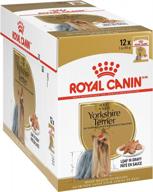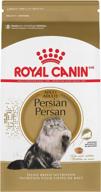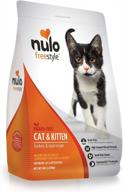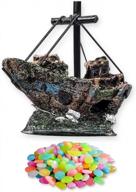Similar products
How to choose the right size decoration for your pet reptile's tank?
When choosing decorations for your pet reptile's tank or enclosure, it's important to pick items that are the right size for the space. The general rule of thumb is that decorations should not take up more than 30-50% of the total floor space. Here are some tips for choosing appropriately sized decorations:
- Measure your reptile's tank floor space and figure out the total square inches/centimeters. Use this to estimate how much floor space decorations should cover.
- Look at your reptile's size - large reptiles like monitors need bigger decorations than small geckos or anoles.
- Pick decorations that are no taller than the tank itself to allow for proper lighting and heating.
- For aquatic turtle tanks, choose submersible decorations that:
- Allow room for turtles to swim around.
- Do not take up more than 30-50% of the water surface.
| Reptile Type | Ideal Decoration Size |
|---|---|
| Small lizards (geckos, anoles) | 1-5 inches length/width |
| Medium lizards (bearded dragons, skinks) | 5-10 inches length/width |
| Large lizards (monitors, iguanas) | 10-20 inches length/width |
Remember that decorations and hides should allow room for your reptile to move around and feel secure. Provide multiple snug hiding spots for a sense of security. Choosing the right sized decorations will help create a comfortable, enriching habitat for your pet reptile.
How to clean and disinfect reptile rock decorations?
Keeping your pet reptile's tank decorations clean is important for health. Rock decorations can harbor bacteria and need occasional disinfecting. Here's how to clean and disinfect reptile rock decorations:
- Remove decorations from the tank and scrub off any debris or waste with a soft brush.
- Wash decorations in hot, soapy water. Avoid using soaps containing strong fragrances. Rinse thoroughly.
- Disinfect the decorations with a reptile-safe disinfectant:
- 5% bleach solution - Use 1 part bleach to 10 parts water. Soak for 10 minutes then rinse well and let air dry.
- Vinegar - Mix a 50/50 vinegar and water solution. Soak for 20-30 minutes then rinse.
- Reptile disinfectant sprays - Follow product instructions.
- For extra scrubbing power, use a bottle brush, toothbrush, or reptile scrubbing wipes.
- Rinse decorations thoroughly until all disinfectant smell is gone.
- Air or towel dry decorations completely before placing them back in the enclosure.
| Decoration Material | Cleaning Tips |
|---|---|
| Resin, plastic | Use hot water, soap, and disinfectant spray. |
| Ceramic, terra cotta | Gently scrub with brush and mild soap. Avoid soaking. |
| Wood | Wipe down exterior only. Avoid soaking. |
Disinfect and thoroughly clean decorations at least once a month. Spot clean more frequently if needed. This will help provide your reptile a sanitary, healthy environment.
How to position a basking rock in a reptile habitat for optimal use?
Proper placement of a basking rock in a reptile habitat allows your pet to thermoregulate by soaking up heat. Follow these tips to position a basking rock for optimal use:
- Place the basking rock on the warm end of the tank directly under the heat lamp or hottest part of the gradient.
- Angle the rock to maximize surface area for your reptile to climb and lie on.
- Keep a safe distance from heat sources:
- 6-8 inches from tank top for heat lamps
- 2-3 inches for under tank heating pads
- Make sure the rock is stable and cannot tip or slide under the reptile's weight.
| Reptile Type | Basking Rock Position |
|---|---|
| Bearded dragons | Under basking spotlight near front of tank |
| Leopard geckos | On top of under tank heater toward warm end |
| Water turtles | Above tank water level with heat lamp focused on rock |
Make sure the basking rock surface stays within your reptile's optimal temperature range. Monitor with an infrared thermometer gun. Adjust the rock position or heat source height as needed to maintain proper surface temperature.
Allow room around the basking rock for your reptile to move on and off as desired to self-regulate body temperature. A well-positioned basking rock lets your pet maximize heat absorption for digestion and optimal health.
How to create a natural looking reptile habitat with rock decorations?
Recreating a natural environment in your reptile's enclosure provides enrichment. Strategically adding rock decorations is a great way to achieve a realistic habitat. Here are some tips:
- Select rocks that resemble those found in your reptile's native climate. For tropical species, choose smooth river rocks or limestone. For desert dwellers, use sandstone or textured volcanic rocks.
- Incorporate different shapes, sizes and colors for visual interest. Stack flat shale pieces to create ledges. Use large rounded stones as basking spots. Mix in some dark basalt columns for accent.
- Place rocks to provide areas for basking, shelter, and climbing. Lean oblong rocks against the wall at an angle to form caves. Build piles for hiding spots underneath. Position stable, flat rocks under heat lamps for basking.
- Use a quality aquarium-safe silicone to securely attach rocks if needed. This prevents shifting or toppling onto your reptile.
- Fill in around rocks with appropriate substrate. For tropical displays, use coconut fiber bedding or orchid bark. For deserts, add sand or fine gravel.
| Reptile Habitat | Rock Selection |
|---|---|
| Leopard gecko desert | Sandstone, layered slate, tan limestone |
| Crested gecko tropical | River rocks, cliff slate, seashells |
| Bearded dragon Outback | Red sandstone, weathered limestone boulders |
Blend different rock sizes, colors and textures for a natural look. For example, use small pebbles to border larger centerpiece rocks. Placing decorations at different heights also mimics the variation found outdoors in rock formations and cliffsides.
With thoughtful rock selection and strategic placement, you can create an engaging reptile habitat that brings the beauty of nature indoors for your pet's enjoyment.
How To Set Up A Reptile Habitat With Rocks For Turtles, Newts, Frogs, Lizards, And Bearded Dragons?
Setting up a reptile habitat with rocks for turtles, newts, frogs, lizards, and bearded dragons can be a fun and rewarding experience. Here are some steps to follow:
- Choose the right rocks: Select rocks that are safe for your reptile and won't harm them. Avoid rocks with sharp edges or that can break easily.
- Clean the rocks: Before placing the rocks in the habitat, clean them thoroughly with warm water and a mild soap. Rinse them well to remove any soap residue.
- Create a natural-looking landscape: Arrange the rocks in a way that mimics your reptile's natural environment. Create hiding spots and basking areas for your reptile to explore.
- Add a basking platform: Use a rock or other platform to create a basking area for your reptile. This will provide a spot for your reptile to rest and soak up some heat.
- Incorporate lighting: Use the right lighting to create a proper day and night cycle for your reptile. Avoid heat rocks as they can get too hot and burn your reptile.
- Maintain the habitat: Regularly clean and maintain the habitat to ensure your reptile stays healthy and happy. Remove any waste and replace the rocks as needed.
By following these steps, you can create a safe and comfortable habitat for your reptile to thrive in.
Another interesting products
What Are The Best Types Of Rocks To Use For A Reptile Habitat?
When selecting rocks for a reptile habitat, it is important to choose rocks that are safe for your reptile and won't harm them. Here are some of the best types of rocks to use for a reptile habitat:
These rocks are safe for reptiles and can be used to create a natural-looking landscape in your reptile's habitat. They can also be used to create hiding spots, basking areas, and other features that will help your reptile feel at home. When selecting rocks, be sure to clean them thoroughly with warm water and a mild soap before placing them in the habitat. Additionally, it is important to regularly clean and maintain the habitat to ensure your reptile stays healthy and happy.
What Are The Benefits Of Using Real Rocks For A Reptile Habitat?
Using real rocks in a reptile habitat can bring many benefits for both the reptile and the overall environment. Here are some of the benefits of using real rocks in a reptile habitat:
Overall, using real rocks in a reptile habitat can provide many benefits for both the reptile and the overall environment. However, it is important to choose rocks that are safe for your reptile and won't harm them, and to regularly clean and maintain the habitat to ensure your reptile stays healthy and happy.
What Are Some Examples Of Reptiles That Benefit From Using Real Rocks In Their Habitat?
Using real rocks in a reptile habitat can benefit many different types of reptiles. Here are some examples of reptiles that can benefit from using real rocks in their habitat:
Overall, using real rocks in a reptile habitat can provide many benefits for different types of reptiles, including thermoregulation, hiding places, climbing surfaces, and enrichment. It is important to choose rocks that are safe for your reptile and to regularly clean and maintain the habitat to ensure your reptile stays healthy and happy.

















